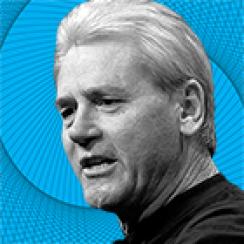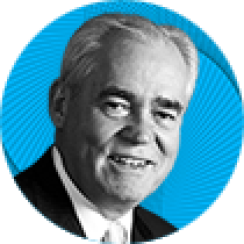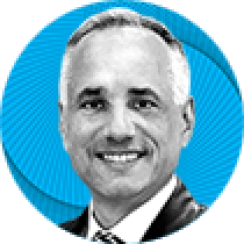< The 2015 Pension 40: The Long Climb

18
Terry O'Sullivan
General President / Laborers’ International Union of North America
Last year: Not ranked
Terry O’Sullivan would like to escape from the Pension Benefit Guaranty Corp. He means no disrespect to the PBGC, an insurance scheme established under ERISA to take over troubled or failed pension plans and continue the flow of benefits. But with a net deficit of $52.3 billion, the PBGC, by its own estimate, lacks the capital to cover anticipated needs. “We see it as something that’s broken and cannot be fixed,” says O’Sullivan, 60, a San Francisco native and a member of a local in Charleston, West Virginia, who has run the Laborers’ International Union of North America since 2000. “We believe in solutions, not bailouts,” he says. “If you give us the tools and the flexibility, we can fix our own problems.” From the start, the relationship between multiemployer plans and the PBGC has been uneasy. Multiemployer funds do not have the same type of default risk as single-employer funds dependent on a corporation. Historically, the PBGC has not stepped in to save multiemployer funds until all their assets have been depleted, and the funds have paid lower premiums than single plans. The Kline-Miller Multiemployer Pension Reform Act of 2014, which O’Sullivan generally supported, sought unsuccessfully to hike multiemployer premiums from $12 per participant per year to $40. The rate is now $26. O’Sullivan contends that hiking the premium merely punishes healthy funds and retirees. As a result, he and others are pushing for legislation that would take away the PBGC backstop and empower trustees to fix their funds. “We’re not calling for the dissolution of the PBGC,” O’Sullivan says. “What we’re saying is it is not suitable long-term for [multiemployer] funds. We don’t want to pay any more premiums, and the PBGC can’t handle any more liabilities.”
The 2015 Pension 40

Illinois 
Laura and John Arnold Foundation 
New Jersey 
AmericanFederation of Teachers 
U.S. Department of Labor |

California 
Commonwealth ofPuerto Rico 
BlackRock 
Chicago 
North AmericanBuilding Trades Unions |

Minnesota 
U.S. Treasury Department 
AFL-CIO 
General Electric Co. 
Brookings Institution |

United Technologies Corp. 
Washington 
Laborers' International Union of North America 
Bridgewater Associates 
Oregon |

Central States Southeast and Southwest Areas Pension Fund 
Pensions Rights Center 
National Coordinating Committee forMultiemployer Plans 
Motorola Solutions 
Morgan Stanley |

The Law Offices of Kenneth R. Feinberg 
Utah 
Center for Retirement Initiatives, Georgetown University 
Groom Law Group 
Stanford Graduate School of Business |

California Public Employees' Retirement System 
Benchmark Financial Services 
New School for Social Research 
Connecticut 
Pension BenefitGuaranty Corp. |

National Conference on Public Employee Retirement Systems 
Elliott Management Corp. 
National PublicPension Coalition 
Prudential Financial 
U.S. Labor Department |
| |






